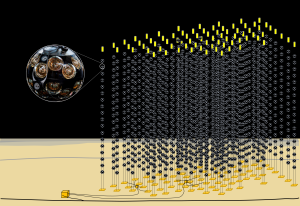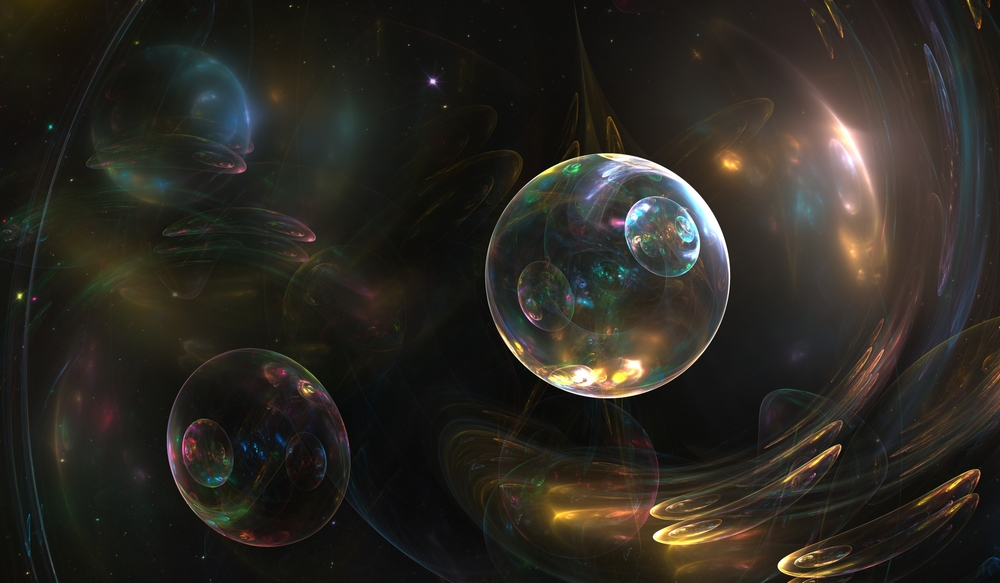Jonathan O’Callaghan tells how a vast deep-sea telescope beneath the Mediterranean Sea captured the most energetic neutrinos ever recorded, giving scientists an unprecedented glimpse into the extreme cosmic events that shape our universe.
Deep in the Mediterranean Sea, scientists have recorded the most energetic neutrino ever detected. They are currently studying what this elusive particle can reveal about the universe we live in.
Beneath the waves of the Mediterranean Sea, Europe’s KM3NeT neutrino telescope explores space. A towering array of sensors extends a kilometer to the ocean floor and is arranged in a vast 3D grid.
What is its mission? This is to capture ghostly subatomic particles called neutrinos. Neutrinos are messengers that can traverse the universe unhindered, even through planets and stars, carrying clues about events far beyond our solar system.
In the early morning hours of February 13, 2023, KM3NeT detected something surprising. The intense flash of pure energy marked the most energetic neutrinos ever observed. This was 30 times higher than the previous record. Since then, scientists have been trying to figure out where it came from.
Why chase neutrinos?
Neutrinos were first theorized in the 1930s and detected decades later. These are among the most abundant particles in the universe, but also the most elusive.
Every second, billions of neutrinos pass through our bodies without leaving a trace. They have almost no charge or mass and are at least a million times lighter than electrons, making them very difficult to detect because they rarely interact with matter.
It is this ghostly quality that makes them so attractive to physicists.
“Neutrinos are the most interesting particles at the moment,” said Pascal Coyle of the French National Center for Scientific Research. He is coordinating an EU-funded project called KM3NeT-INFRADEV2 that supports the development of KM3NeT infrastructure. “There are a lot of mysteries around them. They are the least understood of the fundamental particles.”
Because neutrinos can traverse the universe without being absorbed, they carry primordial information from the most extreme environments known to science, including exploding stars, black holes, and cosmic collisions.
Studying them could reveal how the universe works and even why matter exists.
“Neutrinos are the closest thing we can imagine, but they are the key to fully understanding how the universe works,” Coyle says.
ghost hunter
Neutrinos can collide with atomic nuclei, creating a shower of secondary particles. In dense, transparent materials like ice and water, this collision releases a faint blue flash known as Cerenkov radiation. KM3NeT’s sensor is designed to catch this signal.
This approach is also shared by other neutrino observatories, including IceCube in Antarctica and Super-Kamiokande in Japan. IceCube scans the deep ice of the polar regions, and KM3NeT peers into the dark waters of the Mediterranean Sea.
KM3NeT is one of Europe’s flagship research infrastructures and one of the most ambitious physics projects in the world. It is supported by an international consortium of EU and national funds and consists of two separate facilities.
ARCA (Astroparticle Research with Cosmics in the Abyss) is based off the coast of Sicily and is designed to track high-energy neutrinos from deep space. ORCA (Oscillation Research with Cosmics in the Abyss), located near Toulon, France, focuses on the behavior and mass of neutrinos.
Each array is constructed from a vertical line of basketball-sized glass spheres containing ultra-sensitive optical sensors. These lines rise from the ocean floor like underwater skyscrapers, stretching a kilometer into the darkness. More than 1,000 modules have already been deployed, and 6,000 modules are planned to be deployed by 2027.
“It seemed like a far-fetched idea to build a detector on the ocean floor to capture these very strange particles,” said Aalt Heyboer, a senior physicist at the Netherlands National Institute for Subatomic Physics, who helped design the telescope. “It captured my imagination.”
All this engineering is for a single purpose. It’s a rare flash of a glimpse of neutrinos as they finally make their appearance.
record breaking signal
A neutrino detected in 2023, named KM3-230213A, recorded an energy charge of 220 petaelectronvolts (PeV). This is a very large number for a single particle, and is almost unthinkable in particle physics. “We never expected an event like this to take place,” Coyle said. “We had to redo a ton of simulations.”
Where did it come from? It remains a big mystery.
Neutrinos are produced by a variety of sources, from the nuclear reactions that power the sun to exploding stars (supernovae) and other high-energy cosmic phenomena. One theory proposes that the most energetic neutrinos come from blazars, active galaxies where supermassive black holes hurl jets of energy directly at Earth.

Another possibility is that high-energy cosmic rays streaming through space collide with photons of light and produce neutrinos. If KM3-230213A was produced in this way, it would suggest that cosmogenic neutrinos are more common than expected.
“Or maybe I just got lucky,” Coyle admits. “KM3NeT may have accidentally discovered a rare, very high-energy neutrino.”
Researchers are refining their calculations to trace its exact origins. “We’ll be able to measure that direction more precisely in the coming months,” Haiboer said. “If it’s from a blazer, that’s very exciting. If it’s cosmogenic, that’s exciting too.”
Exploring the properties of matter
While ARCA searches for the source of the universe’s most powerful particles, ORCA focuses on how neutrinos change identity, or oscillate, between three different “flavors” (electrons, muons, and tau) as they travel through the universe.
These oscillations could reveal the ordering of neutrino masses, a missing piece in the Standard Model of physics, the theory that describes the fundamental particles of matter. Mass order refers to the order of the three neutrino mass states from lightest to heaviest.
Why is this important? Because understanding neutrinos may explain why there is something instead of nothing.
After the Big Bang 13.7 billion years ago, matter and antimatter were supposed to destroy each other, leaving only empty space. However, the material survived. Neutrinos could hold the key, especially if they turn out to be their own antiparticles, a possibility scientists want to test.
“All experiments that try to measure the difference between neutrinos and antineutrinos are confused because we don’t know what mass ordering is,” Coyle explained. “This is important information for understanding why there is matter rather than antimatter.”
European deep sea benefits
With the construction of KM3NeT, Europe has secured a leading role in this global scientific endeavor. “Very importantly, we received funding from the EU in 2006 to do a design study,” Coyle said. From there, with additional European and national support, the concept became a reality.
Already, that investment is paying off, with detections like KM3-230213A, and more discoveries expected as the telescope expands.
“We don’t know their masses, we don’t know their mass ordering, and we don’t know whether they are unique antiparticles,” Coyle says. “So neutrinos exist at this moment.”
With thousands more sensors yet to be deployed, KM3NeT not only strengthens Europe’s role in basic research, but also listens to some of nature’s faintest signals.
Each flash of light deep underground in the Mediterranean could contain a message about the birth of the universe, or even clues as to why there is something instead of nothing.
The research for this article was funded by the European Research Council (ERC). The views of the interviewees do not necessarily reflect the views of the European Commission.
This article was originally published in Horizon, EU Research and Innovation Magazine.
Detailed information
Source link

